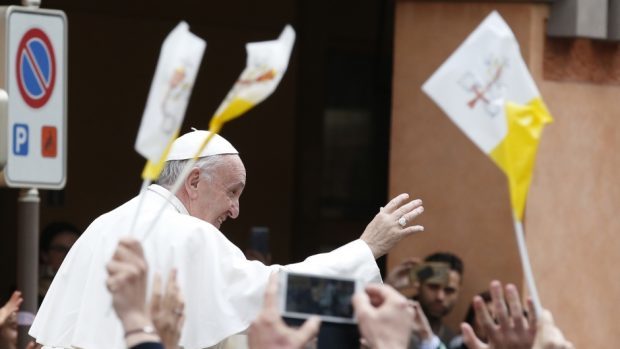The memory I am about to recount has worn a groove in my mind, stopping and starting like a video as I examine the nuances of the stilled frame.
It’s a recent meeting between a bishop and the victim of an abuser priest. The bishop is silent but his hand shakes. Stop.
Fear or anger?
Start. When the victim speaks, the bishop’s eyes bore into him.
Replay. Not anger… fury. A man forced to listen who doesn’t want to hear. The resentment, the absence of compassion, are so marked I finally say: “The church has to care; not just be seen to care, but actually care.”
Silence.
In recent months more Catholic Church scandals have been revealed worldwide: Chile, Ireland, America. The US crisis strikes to the heart of Rome; Cardinal Theodore McCarrick has been accused of sexual abuse offences dating back decades.
A high-ranking diplomat, Archbishop Carlo Maria Vigano, says not just Vatican officials but Pope Francis himself covered up.
For those of us involved in Catholic Church investigations, this is no surprise.
In 1992, Richard Sipe, an American ex-priest, psychotherapist, and researcher into abuse and celibacy in the Church wrote: “The problem of sexual abuse we see today is only the tip of the iceberg. If we follow the problem to its foundations it will lead to the highest corridors of the Vatican.”
Sipe – whom I admired hugely for his courageous, compassionate, advocacy for victims – died last month. It was he who was responsible for exposing the McCarrick scandal.
In 2013, when I broke the story of Scottish Cardinal Keith O’Brien’s sexual advances to young men in his charge, I phoned Sipe. “The same is about to happen here,” he assured me.
O’Brien was not an isolated scandal but a single element in a global corruption.
American journalists say they knew about McCarrick for years but couldn’t get complainants to speak on the record.
I know how they felt. Following O’Brien’s resignation I gathered stories about other senior figures that became impossible to publish.
“You’re doing a great job,” some priests told me, “but don’t use my name.”
I felt I had lifted a Lenten curtain that hid vile secrets.
Dropping it again, remaining silent about the cesspit, caused me deep damage. Too many Catholics – priests and laity – have hijacked the word loyalty, as if protection of the institutional Church is the most important thing. It’s not. Protection of the truth, protection of justice, protection of the innocent, are.
The machinations of the Catholic Church are horrifying, complex, and hallmarked by internal ideological wars. Some want to link abuse to homosexual activity, full stop. But sexual orientation does not cause abuse. A culture of lies and hypocrisy, of you-keep-my-secrets-and I’ll-keep-yours, in which the institutional Church becomes a ruthlessly mechanistic monster that gobbles up victims to prevent them squealing, does.
The question is why Vigano squealed. Was he horrified by concealment – which he had known about for years – or did he dislike Pope Francis’s supposedly liberal agenda of reform?
Francis’s motivation is equally difficult to determine. Right-wingers are suddenly questioning “infallibility” because they don’t like the message any more; progressives are optimistic. But Francis’s liberal words have never been followed by liberal action. So, is he motivated by principle or expediency?
What about the silence of Pope Emeritus Benedict? Is it fuelled by deference to Francis – or because for “the Rottweiler”, who handled decades of abuse cases in Rome, silence prevents accountability?
At the heart of it all should be those whose lives have been devastated. The allegations against McCarrick are harrowing.
The Scottish Church’s safeguarding document, In God’s Image, calls for compassion for victims just as Francis’s recent letter to the world’s Catholics does.
Yet the eyes of bishops remain cold and the obfuscation and deception continues.
In 2013 Australian priest Fr Greg Reynolds was ex-communicated for supporting women’s ordination and gay marriage. Which abuser has ever been excommunicated?
It seems ideological disobedience is more heretical than the sexual and spiritual abuse of vulnerable children.
You can be anything you like in the Church – including an abuser – as long as afterwards you do what you are told.
“The truth is silent,” Francis said in response to Vigano’s accusations.
Silent? The Church in Scotland bleats incessantly about sectarianism while a giant heap of what even the Pope referred to as “caca” – excrement – creates a far more foul stench around its doorways.
Silent? Victims still contact me because they are dismissed, humiliated, ignored and denied justice.
The truth should be loud and unafraid because, as Martin Luther King once said, there comes a point when silence is betrayal.

